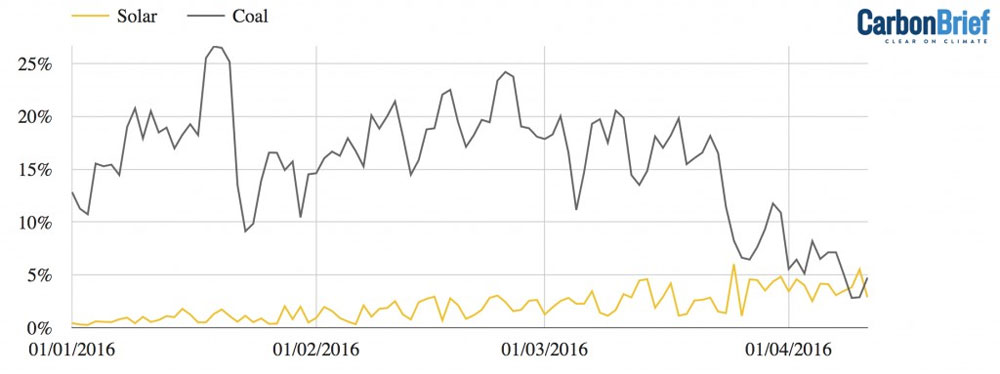Coal combustible organic rock material made from millions of years of a combined effect of pressure and heat of vegetation in sedimentary strata. Carbon is the main component of coal, which also is the main component of carbon dioxide (CO2) released from the combustion of coal.
CO2 is a major greenhouse gas (GHG) which is a leading contributor to global warming. As we know, global warming is fast becoming the main cause of climate change which leads to direct changes in our physical environment.
Some of these changes include rising sea levels, stronger hurricanes/storms, and more floods or excessive droughts will become more common.
The International Energy Agency states that coal is a major primary source for worldwide power generation—about 40%. So, this trend may continue to increase.
But there is good news.
Coal has been the world’s leading source of power generation for the utility industry. However, solar energy has seen an increased rate of demand due in part to the effort of governments support with favorable policies and decrease in solar panel cost driving manufacturers to compete for those dollars and other countries to institute more favorable policies.
The 2016 Paris Agreement has been the cornerstone or pushing force behind the increasing interest and funding the global solar industry has seen in the past year.
This Agreement or “L’accord de Paris” as it is known, is a bridge between today’s policies and climate-neutrality before the end of the century. The agreement, which is due to enter force in 2020 sets out a global action plan to put the world on track to avoid dangerous climate change by limiting global warming to well below 2°C.
Among the 195 countries that have agreed to adopt this first-ever universal plan, are the United States, Canada, China, and India. These countries are amongst the top 10 largest generators of greenhouse gasses.
Noting the incumbent presence of top developed countries—but also the appearance and continues presence of major emerging economy nations such as China and India leading in total carbon dioxide emissions.
In the United States, for example, the government helps by instituting favorable tax credits which enable home and business owners to take off 30% of the price of their solar energy systems from their income taxes. This forces competition in the marketplace which drives down the cost of installation, also known as Balance of system cost (BOS).
As per a recent report by the US Energy Information Administration (EIA), energy-related CO2 emissions in the United States reached their lowest point since 1991 in the first half of 2016. The report added that coal use fell by 18% compared with the first half of 2015.
This attack on the coal industry from many fronts reached a tipping point by which the industry suffered historic losses in 2015 as concern about its greenhouse gas emissions took hold. The continued decline in interest to invest in coal for electricity generation helps solar energy’s growing popularity and influence.
India is on track to fulfill the very ambitious goal to increase solar power capacity to 100 gigawatts (GW) by 2022; providing most of the population with electricity and lift millions out of poverty. The country plans to move away from coal—which currently provides around 90% of the total energy demand of the subcontinent (India, Pakistan, and Bangladesh)—to solar power
In the UK, electricity generated by solar farms and on residential rooftops outpaced the country’s aging coal power stations for over six months in a historic first. To put it in perspective, the latest milestone saw an estimated 6,964 gigawatt hours (GWh) generated by solar over the half-year, or 5.4% of the UK’s electricity demand. Coal produced 6,342GWh or 4.7%.

Solar share (yellow) of UK daily electricity generation, compared to that for coal (grey), during the first 102 days of 2016. This runs up to and including Monday 11 April 2016. Sources: Sheffield Solar and Gridwatch. Chart by Carbon Brief.
Per a new report from Bloomberg New Energy Finance, solar will become the cheapest source to produce power in many countries over the next 15 years. The report adds that the cost to install large solar portfolios and to install solar on rooftops will drop 60% to roughly 4 cents per kilowatt hour (kWh) by 2040. This means it will be cheaper than coal and natural gas power in many regions.
The report also forecasts that by the year 2040, 15% of the world’s electricity will come from solar panels, and that people and businesses will invest nearly $135 billion into solar energy infrastructure each year.
















Comments